Vietnam is moving towards green agriculture by turning waste into resources, from organic fertilizers to bioenergy. Circular solutions not only reduce greenhouse gas emissions but also bring economic value to farmers, aiming for “Net Zero” by 2050.
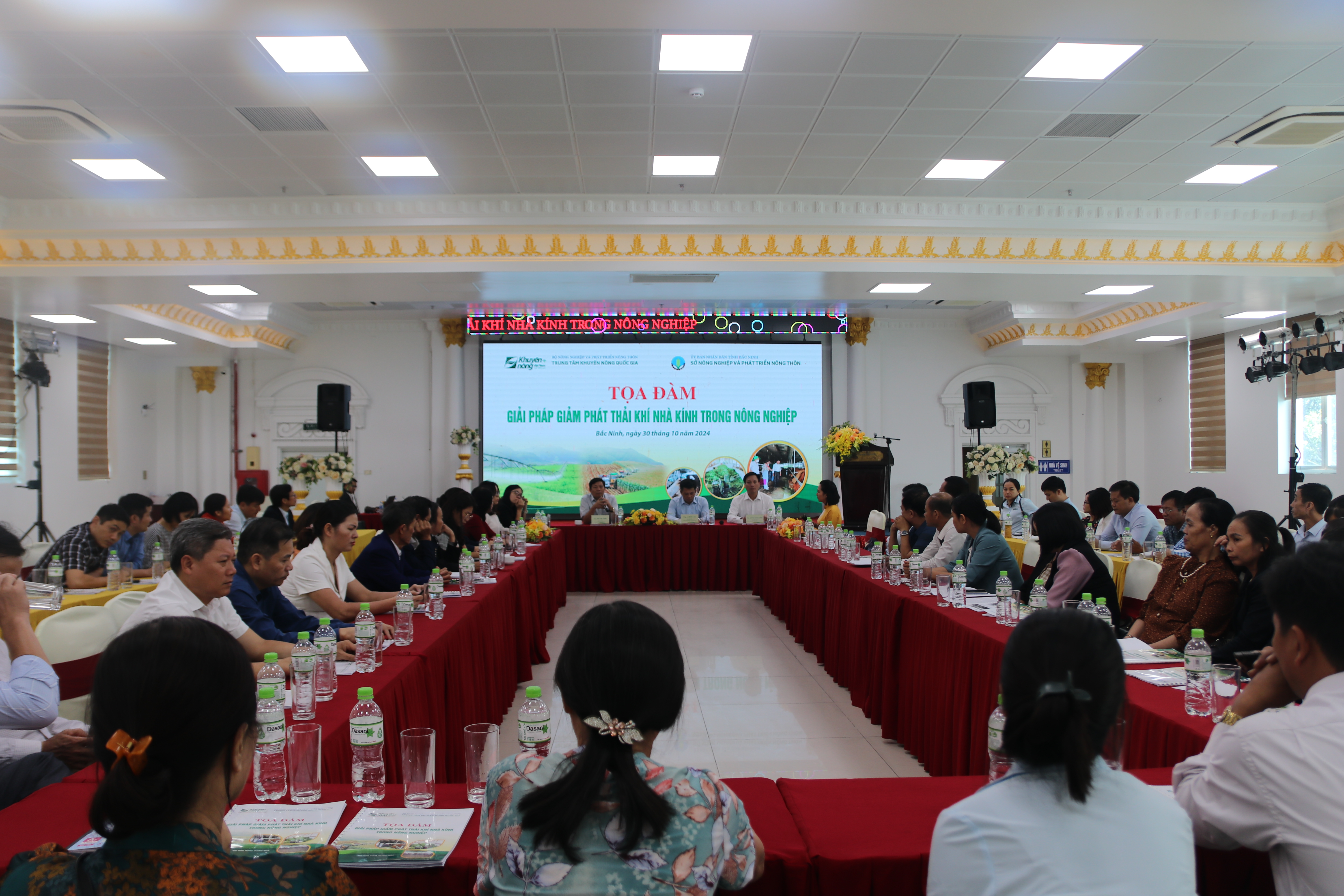
On October 30, the National Agricultural Extension Center coordinated with the Department of Agriculture and Rural Development of Bac Ninh province to organize a seminar on “Solutions to reduce greenhouse gas emissions in agricultural production” with more than 100 delegates attending. Photo: Nghia Le
Major greenhouse gas emitters in agriculture...
According to Mr. Nguyen Duy Dieu, representative of the National Agricultural Extension Center: "Vietnam's agriculture is one of the sectors with the highest greenhouse gas emissions, accounting for 30% of the country's total emissions. Emission sources are mainly concentrated in three main areas: rice cultivation, livestock and poultry farming, soil management and chemical fertilizers. These factors all contribute to the emission of methane (CH4), nitrous oxide (N2O), and CO2 - three greenhouse gases that have a very strong impact on climate change".
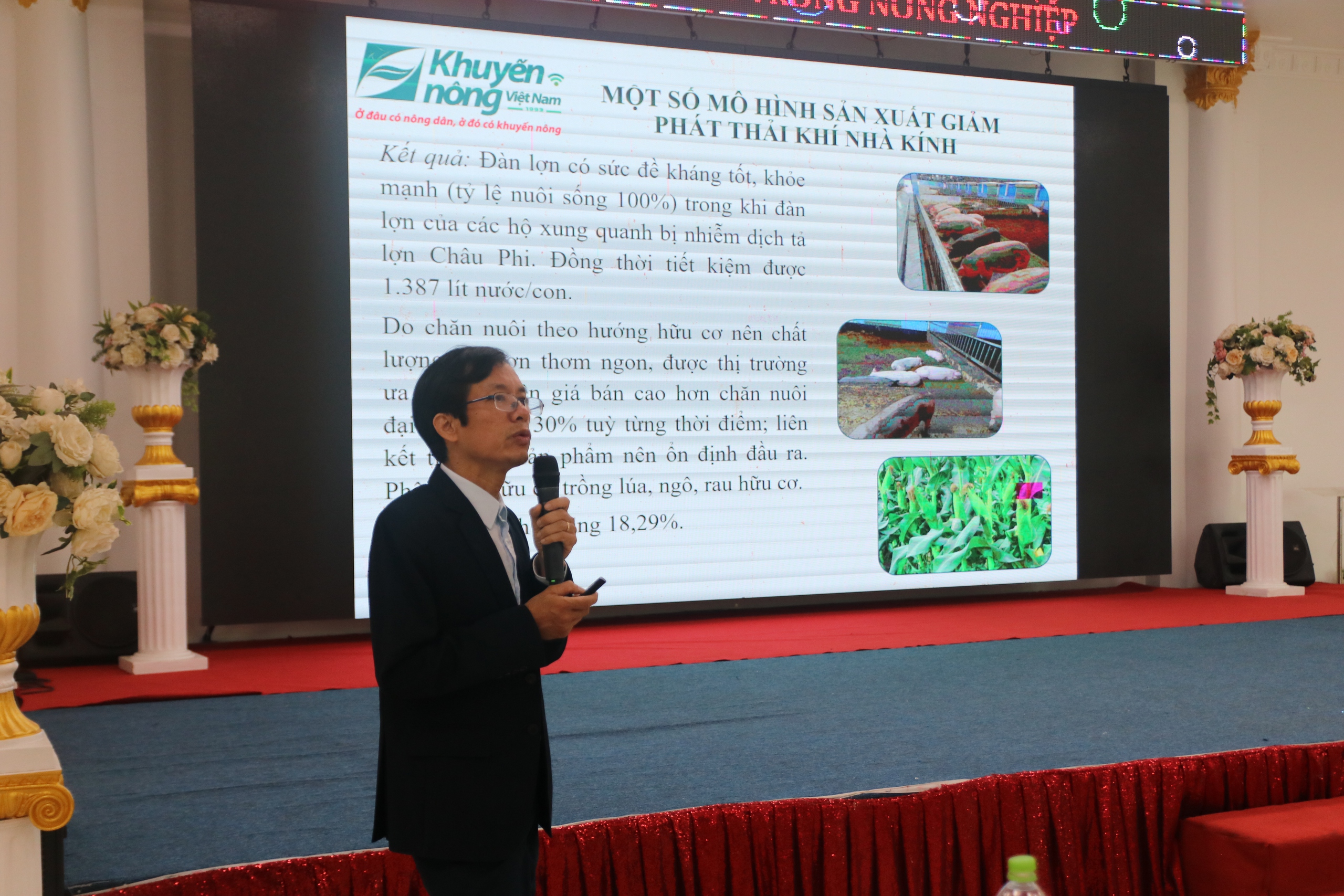
Mr. Nguyen Duy Dieu, representative of the National Agricultural Extension Center, pointed out the key factors in the process of greenhouse gas emissions in agriculture. Photo: Nghia Le
Of these, rice cultivation is the largest source of emissions, accounting for 50% of total greenhouse gas emissions in the agricultural sector, equivalent to 49.7 million tons of CO2 per year. Because rice is often grown in flooded conditions, the rice field environment becomes an ideal place for anaerobic microorganisms to thrive, creating methane gas during the organic decomposition process. Methane gas has the ability to cause a greenhouse effect 28 times stronger than CO2, so the amount of methane emitted from rice cultivation has a large impact on climate change.
In addition, traditional farming practices with continuous flooding also make the decomposition of straw after harvest difficult to control. Straw left in the field is often burned to prepare for the next crop, creating large amounts of CO2 and increasing air pollution. Although burning straw is an easy and time-saving method, it causes great harm to the environment and the health of the surrounding community.
Livestock and poultry farming account for approximately 19% of total agricultural greenhouse gas emissions, equivalent to 18.5 million tons of CO2 per year. In livestock farming, methane emissions mainly arise from the digestion of ruminants (such as cows) and the decomposition of waste. Cows and other ruminants emit methane during the digestion of feed, especially when fed grass and roughage, increasing greenhouse gas emissions. In addition, small-scale livestock farms often have difficulty properly disposing of waste, leading to uncontrolled anaerobic decomposition.
Soil management and the use of chemical fertilizers account for about 13% of total greenhouse gas emissions from the agricultural sector, equivalent to 13.2 million tons of CO2. The overuse of chemical fertilizers in farming not only pollutes soil and water, but also generates N2O, a greenhouse gas 265 times more potent than CO2. N2O is produced from chemical fertilizers when not fully absorbed by plants and metabolized in the soil, especially in wet conditions.
Circular solutions
Ms. Pham Thi Vuong, Vice President of the Vietnam Circular Agriculture Association, proposed solutions to turn agricultural waste into resources, which are to make full use of livestock by-products, converting them into organic fertilizers and bioenergy through biogas systems. According to Ms. Vuong, this not only helps reduce greenhouse gas emissions but also brings economic benefits to livestock farmers.

Ms. Pham Thi Vuong, Vice President of the Vietnam Circular Agriculture Association, wants to emphasize that farmers must make full use of waste, turn it into resources, into money, creating economic resources while being environmentally friendly, avoiding wasting all resources. Photo: Nghia Le
Livestock is one of the largest emitters, accounting for 19% of total CO2 emissions in agriculture, equivalent to about 18.5 million tons of CO2 annually. However, if properly utilized, livestock waste can become a valuable resource, bringing both environmental and economic benefits.
Through the application of circular treatment technologies, solid waste in livestock farming can be composted into organic fertilizer or converted into bioenergy through a biogas system. This is not only a solution to reduce methane emissions, one of the most powerful greenhouse gases, but also creates a clean fuel source, bringing additional income to livestock farmers.
Many large livestock farms and cooperatives have taken the lead in applying biogas systems, both effectively treating waste and producing gas to meet the energy needs of farms and households. According to statistics, the use of biogas can reduce methane emissions by up to 60%, while significantly reducing energy costs for livestock households.
Not stopping there, by-products from the biogas system can also be used to produce organic fertilizers, helping to improve soil, increase crop yields and reduce dependence on chemical fertilizers.
"For large-scale farms, modern biogas systems can provide enough electricity and gas to maintain the operation of the entire livestock facility, and can even sell excess gas to the market. This helps farmers not only reduce costs but also create a stable source of income," Ms. Vuong added.
According to Mr. Mai Van Trinh, Director of the Institute of Agricultural Environment, "The composting method from organic waste is very useful in circular agriculture and is being widely deployed to reduce greenhouse gas emissions. The application of composting techniques not only improves soil quality, increases fertility but also reduces dependence on chemical fertilizers, thereby reducing N2O emissions. Many farms and agricultural cooperatives in Vietnam have successfully applied this method, contributing to promoting a green, sustainable agriculture and reducing negative impacts on the environment."

Mr. Mai Van Trinh, Director of the Institute of Agricultural Environment, shared about agricultural production measures to reduce greenhouse gas emissions at the seminar. Photo: Nghia Le
In addition, agricultural waste such as straw, which is often wasted or burned after each harvest, can now be reused more effectively. Instead of burning straw, which pollutes the air and releases a large amount of CO2, farmers can compost straw into organic fertilizer or use it as animal feed. This method not only helps reduce greenhouse gas emissions but also takes advantage of the natural nutrients from straw, adding organic matter to the soil and improving fertility, thereby increasing productivity for the next crop.
To reduce greenhouse gas problems, Mr. Trinh also recommended applying the "alternate wetting and drying" (AWD) technique, which helps control the amount of water in rice fields, reduces the formation of methane gas and at the same time saves water resources, meeting the requirements of sustainable production.
Reducing greenhouse gas emissions from fertilizers and soil management is one of the key strategies for sustainable agricultural development. Chemical fertilizers, especially those containing nitrogen, are a major source of N2O emissions – a greenhouse gas that is 300 times more potent than CO2. Overuse of chemical fertilizers not only increases emissions but also causes the soil to gradually lose its natural fertility, leading to soil degradation.
Organic farming models and techniques using microbial fertilizers are being encouraged and replicated to reduce emissions and protect the environment. Microbial fertilizers not only provide nutrients for crops but also help improve soil structure, enhance beneficial microorganisms, and create conditions for sustainable plant growth. Organic fertilizers from animal and plant waste are also a natural, nutritious and environmentally friendly source of fertilizer, Mr. Trinh added.
Towards green, circular agriculture
According to Mr. Le Minh Linh, Deputy Director of the National Agricultural Extension Center: "The goal of circular solutions in agriculture is to make full use of all waste and by-products, turning them into renewable resources, in order to significantly reduce greenhouse gas emissions. When agricultural and livestock waste is reused to serve production activities, agriculture will gradually shift to a circular, sustainable model."
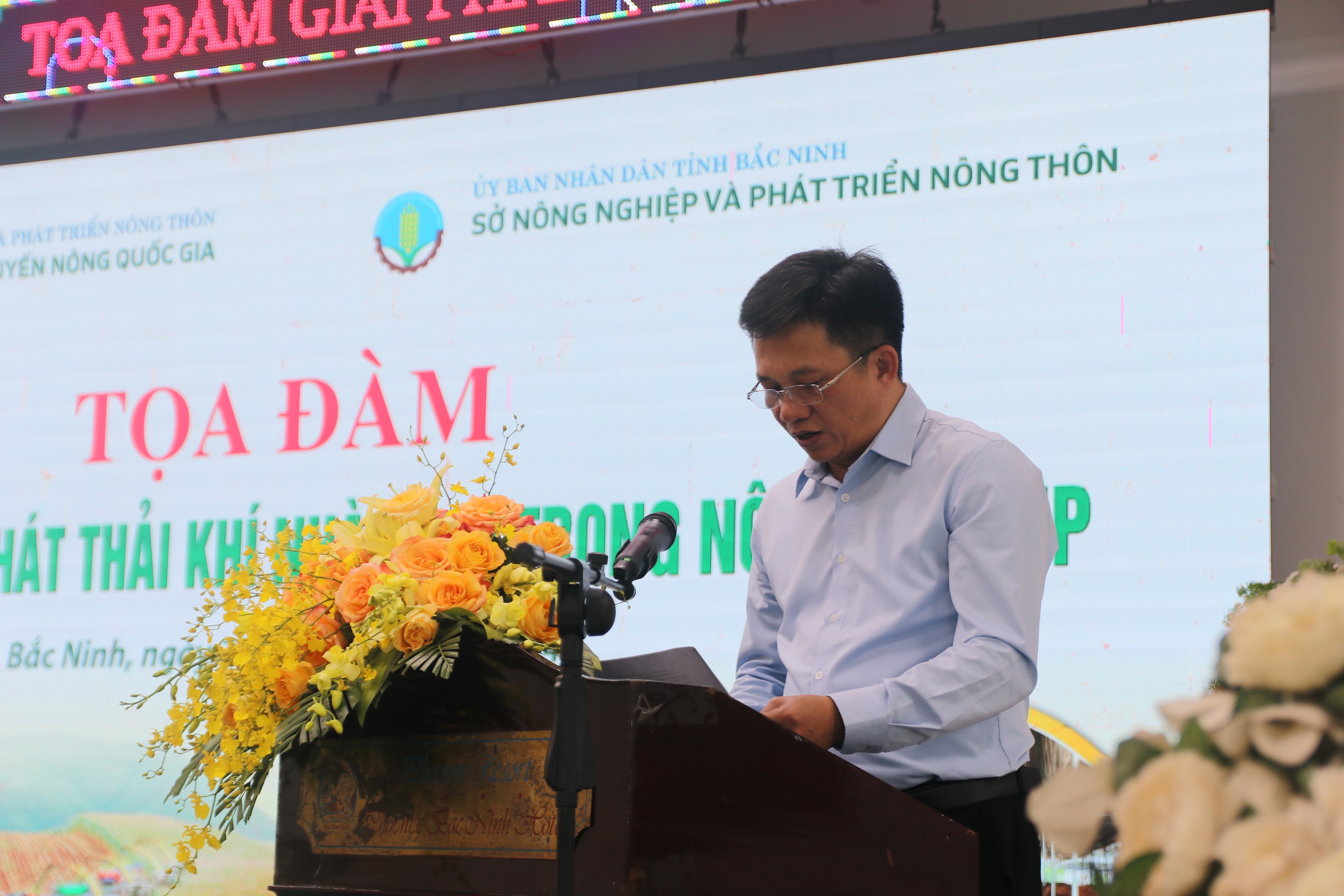
Mr. Le Minh Linh, Deputy Director of the National Agricultural Extension Center emphasized: "It is necessary to strengthen propaganda, raise awareness and transfer technical advances and new technologies in agricultural production to reduce greenhouse gas emissions, propose appropriate processes and standards for each subject, field and region. Photo: Nghia Le
"Applying circular solutions in agriculture not only brings economic benefits but also contributes greatly to the goal of reducing greenhouse gas emissions, moving towards achieving the "Net Zero" commitment by 2050. Agricultural extension programs, technical support and incentives for circular economic models will help raise awareness and skills of farmers, thereby building a greener and more sustainable agriculture for Vietnam," Mr. Linh added.
Source: https://danviet.vn/bien-chat-thai-thanh-tien-su-dung-cac-giai-phap-tuan-hoan-de-giam-phat-thai-khi-nha-kinh-2024103022573568.htm


![[Photo] Close-up of Tang Long Bridge, Thu Duc City after repairing rutting](https://vphoto.vietnam.vn/thumb/1200x675/vietnam/resource/IMAGE/2025/5/19/086736d9d11f43198f5bd8d78df9bd41)
![[Photo] General Secretary To Lam attends the conference to review 10 years of implementing Directive No. 05 of the Politburo and evaluate the results of implementing Regulation No. 09 of the Central Public Security Party Committee.](https://vphoto.vietnam.vn/thumb/1200x675/vietnam/resource/IMAGE/2025/5/19/2f44458c655a4403acd7929dbbfa5039)
![[Photo] Panorama of the Opening Ceremony of the 43rd Nhan Dan Newspaper National Table Tennis Championship](https://vphoto.vietnam.vn/thumb/1200x675/vietnam/resource/IMAGE/2025/5/19/5e22950340b941309280448198bcf1d9)


![[Photo] President Luong Cuong presents the 40-year Party membership badge to Chief of the Office of the President Le Khanh Hai](https://vphoto.vietnam.vn/thumb/1200x675/vietnam/resource/IMAGE/2025/5/19/a22bc55dd7bf4a2ab7e3958d32282c15)


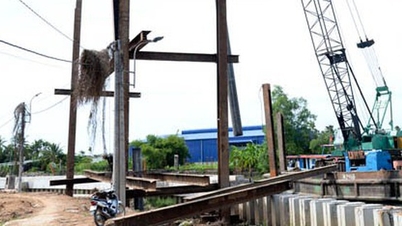







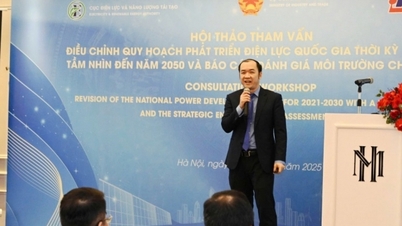
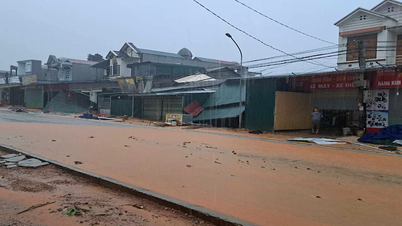

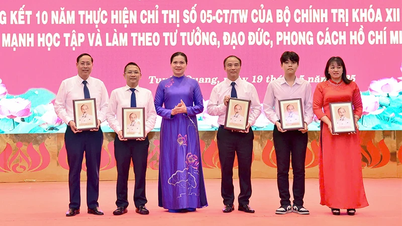
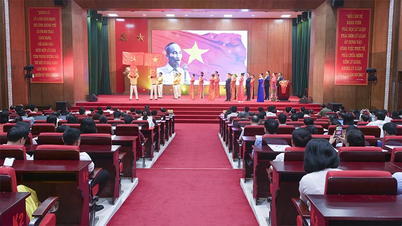
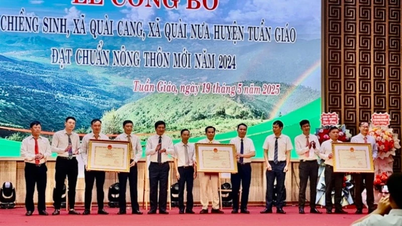
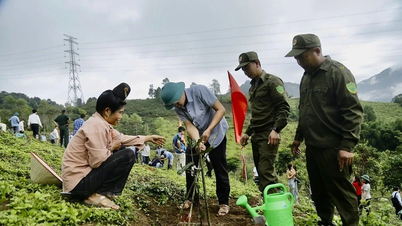
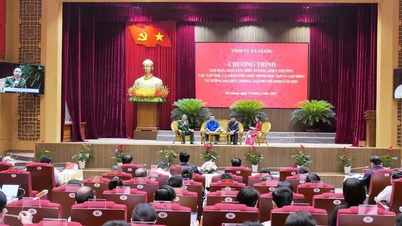







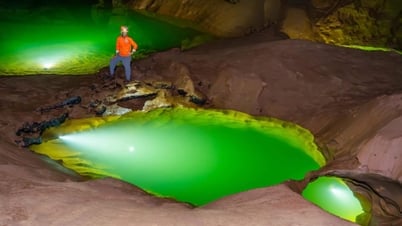
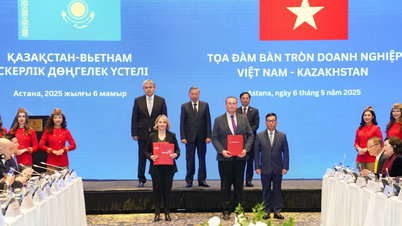

![[Photo] Prime Minister Pham Minh Chinh inspects the progress of the National Exhibition and Fair Center project](https://vphoto.vietnam.vn/thumb/1200x675/vietnam/resource/IMAGE/2025/5/19/35189ac8807140d897ad2b7d2583fbae)









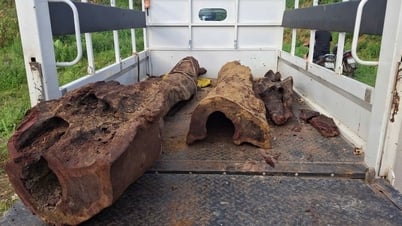



































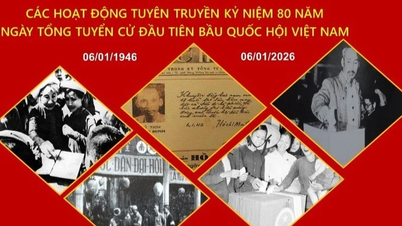



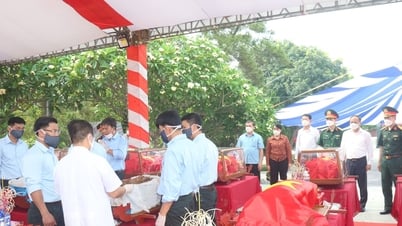



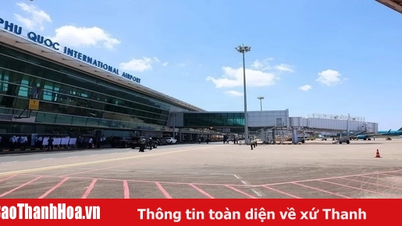

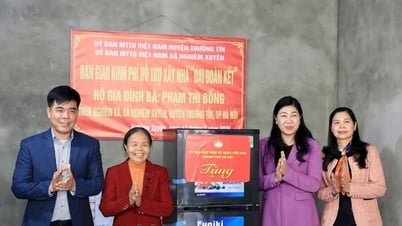




![[VIDEO] - Enhancing the value of Quang Nam OCOP products through trade connections](https://vphoto.vietnam.vn/thumb/402x226/vietnam/resource/IMAGE/2025/5/17/5be5b5fff1f14914986fad159097a677)





Comment (0)